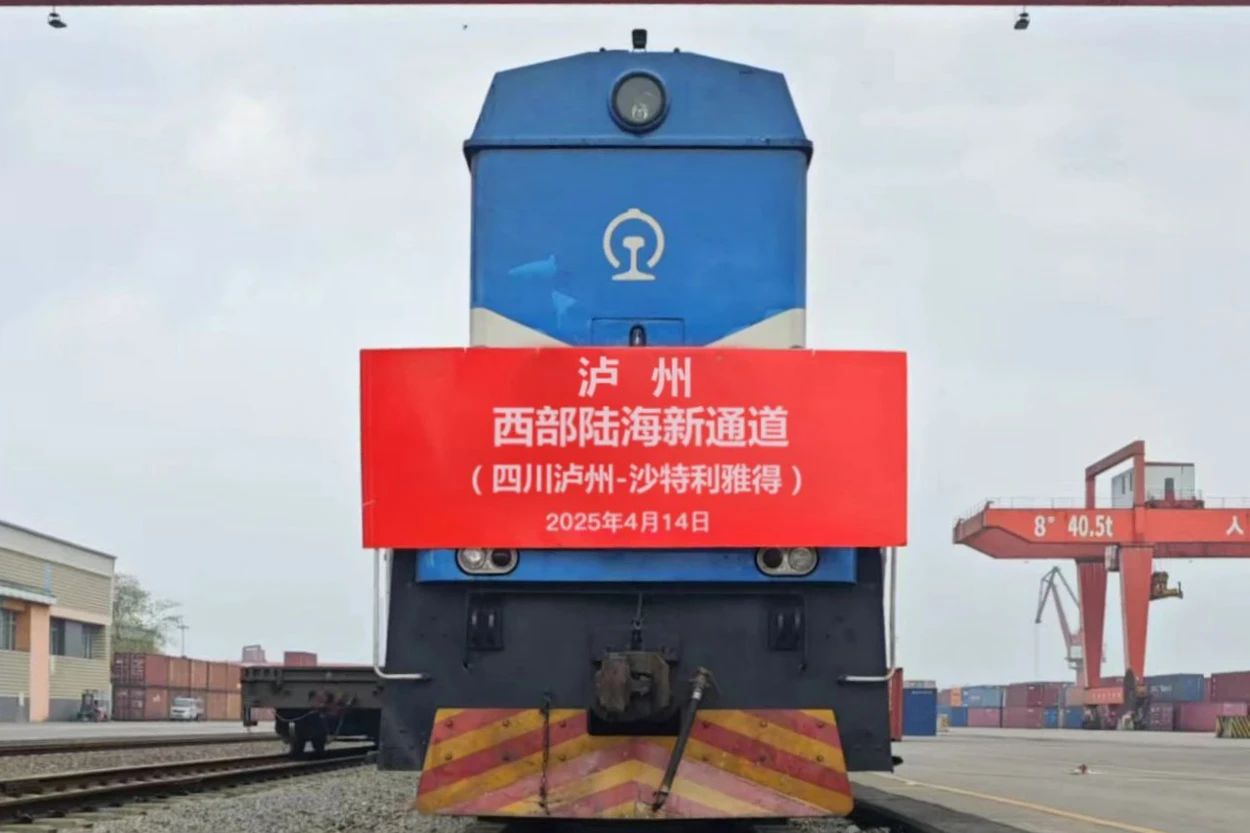“Goods Made in Luzhou” Set Sail to Saudi Arabia through the “Luzhou Port - Nansha Port” Sea-Rail Intermodal Transportation (Picture)

It is reported that as early as 2018, the “Guangzhou - Luzhou” sea-rail intermodal train achieved two-way operation. This train is a convenient channel connecting the Chengdu-Chongqing Economic Zone and the Guangdong-Hong Kong-Macao Greater Bay Area, and an important measure to promote the coordinated opening-up of the free trade zones in the two places and optimize the business environment.
Under the guidance of the Port Logistics Office of Luzhou, Guangzhou Port Group, Luzhou Transportation Logistics Group, Sichuan Land Sea New Channel Development Co., Ltd., and Sichuan COSCO Shipping Logistics Co., Ltd. have jointly created a new mode of container multimodal transportation. Compared to traditional pure road transportation, enterprises can reduce comprehensive costs by 15% -20% and shorten the entire transportation cycle by 3-5 days through this mode.
In order to accelerate the implementation of the project, Guangzhou Port fully utilizes the resource advantages of “port + railway”, relies on the container multimodal transportation mode, and provides personalized full process logistics solutions for chemical, building materials, food and other characteristic industries in southern Sichuan with supply chain thinking. Through the Nansha Port railway, goods are quickly received and unloaded and seamlessly connected to international mainline ships, effectively shortening transportation time. With services such as “integrated customs declaration”, the process is simplified to ensure efficient export of goods.
It is reported that in the next stage, Guangzhou Port will continue to promote the development strategy of “hub + channel + network”, continuously improve the core capacity level of the hub port, build a dual circulation hub for domestic and foreign trade containers in Nansha, further consolidate the foundation of advantageous routes in Southeast Asia, Africa, the Middle East, and other regions, and help the Greater Bay Area connect with the national domestic and foreign trade dual circulation development pattern. At the same time, we will connect to the central and southwestern regions through the sea-rail intermodal transportation, improve the collection and distribution system, and optimize the development of a logistics network that connects points to areas, forms a network through areas and combines into large areas, thus providing efficient and convenient sea routes for more inland regions. (Peng Shengqiang, and Wang Jiashuo)
News
- The "Nodes to Network (N2N)" between Guangzhou Port and PSA Has Officially Launched (Picture)
- “Goods Made in Luzhou” Set Sail to Saudi Arabia through the “Luzhou Port - Nansha Port” Sea-Rail Intermodal Transportation (Picture)
- The Dedicated Warehouse of Shunde Cross-border Freight Forwarders Association Have Been Put Into Use at Guangzhou Port Nansha International Logisti...
- Huang Bo and His Entourage Visited COSCO Shipping Group (Picture)
- Liuzhou Inland Port of Guangzhou Port Was Unveiled (Picture)